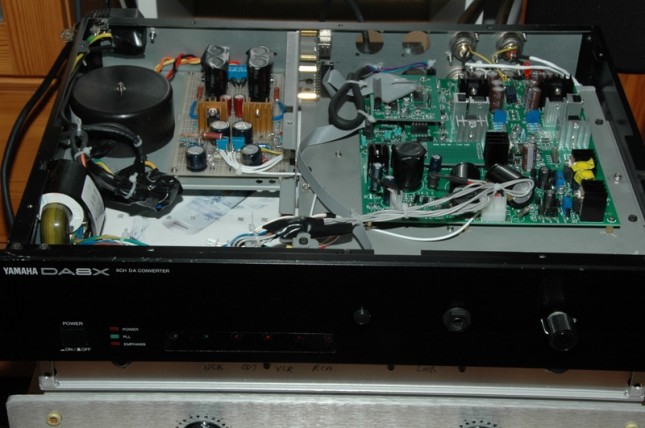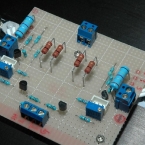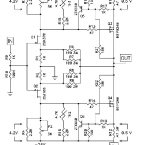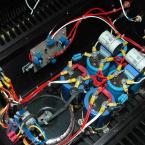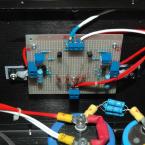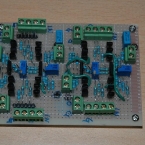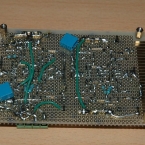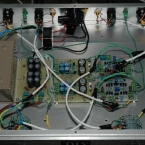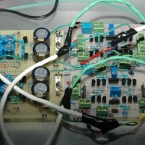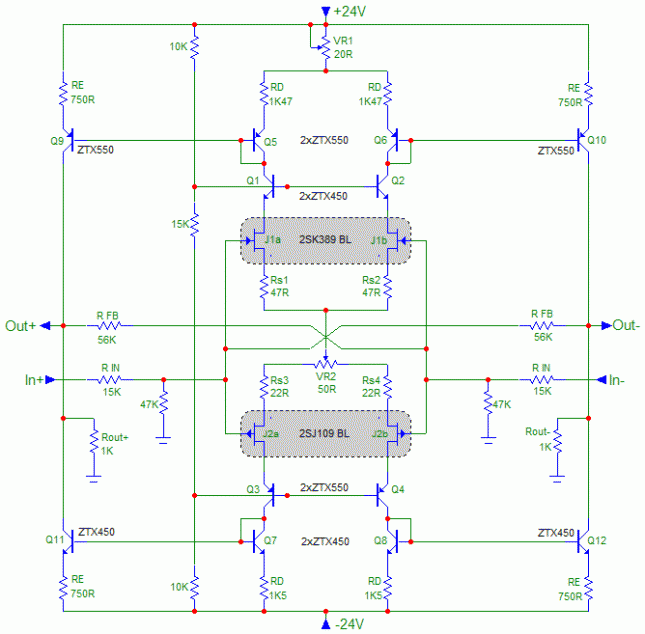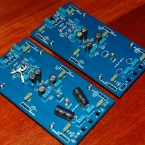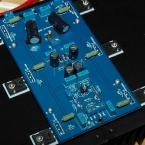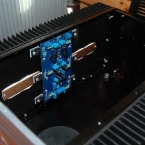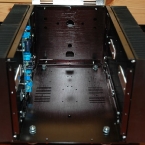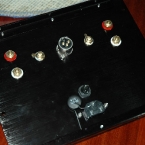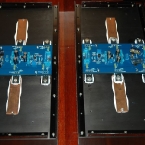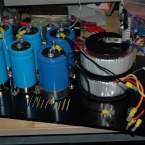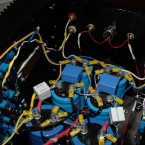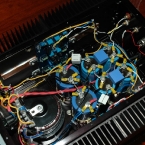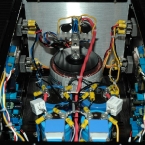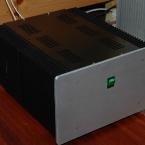Those who had brought my F4 kits few years ago can purchase this kit or boards for a quick conversion from F4 into F5T because all the holes and mosfet locations will be same as the F4 pcb. The optional MUR3020W can be obmitted if not use. If F4 buyer has the original IRF9240/240 power mosfet, it can be re-used.
The To-92D transistor are Toshiba 2SC2705Y/2SA1145Y rated at 800mW and thus it is very safe to use at 60 deg C environment for less than 200mW dissipation. It would survive safely under a maximum supply voltage of +/-32V. The Panasonic capacitor is rated at 35V and thus a supply voltage of no more than +/-32V is recommended for this kit.
I build a version using Toshiba Mosfet 2SK1530/2SJ201. The supply voltage is +/-22V and thus I do not use the cascade transistors (2SC2705Y and 2SA1145Y). I also change 3 resistors and details refer to the “F5T-BOM-cost” document. The change on R11/R12 is to increase the thermal stability and R27/R28 is for increasing the supply voltage to jfets to be minimum 10V or above for a supply voltage of 22V. 49.9R to replace 47R do to stock issue.
Sound wise, it is more powerful than the F5 original due to higher current output and more pairs of mosfet is used. Overall the sound is smoother and warmer than F5. Nelson said this amp sound more relax!
Please look at the F5T-BOM-cost documents for the detail kits offer – Price & BOM options.
Details: F5T-BOM-Cost_2017 (updated transistors prices)
Manual: F5 Turbo Assembly Instruction v3
Power supply ripple comparison CLC vs CRC: It can be seen that an inductor of 0.47mH air-coil has improved the ripple peak to peak level to 20 times smaller. See attached: F5T ripple
After building another set with Cascade transistors, the noise level with grounded input is about half of that without cascade transistors. The reason is that the filtering of the transistors at the base is much better and thus the jfets is supplied with a more stable supply with lower noise level. Here is the measurement comparison.
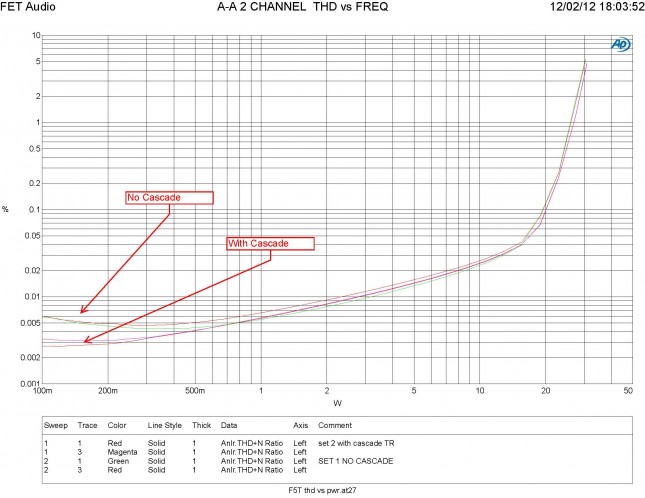
Notes for F4 up-graders: For the MUR3020W, I have no pre-tap holes for them and thus I use a L-Bar to fix the 3 power mosfet and MUR3020W as shown.
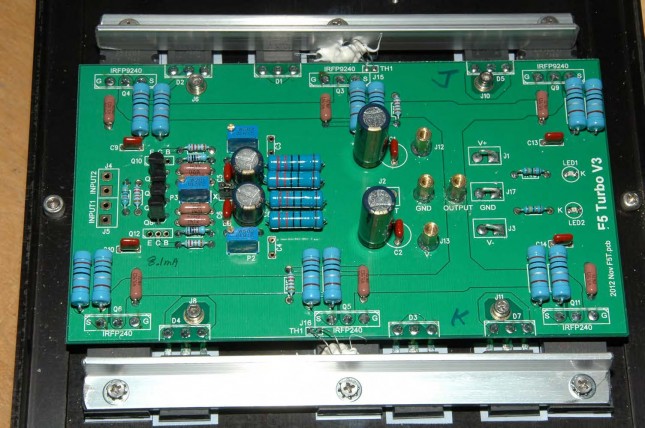
I have built the third set with 32V supply as suggested by Nelson Pass. Here is the measurement of distortion vs Power Output at 8.2 ohm load. With higher supply voltage, the distortion is lower at 0.004% 1W. The non-cliped output is about 50W. For this measurement, the bias is about 1.6A to 1.7A for each channel. The conclusion is that the distortion is lower at 32V and higher at 22V supply. With no surprise, this set sound the best after adding the Solen 1mH coil in the power supply (CLC) filter.
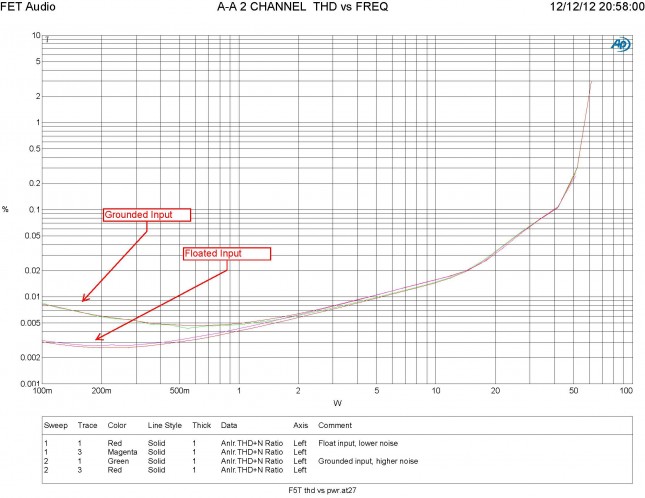
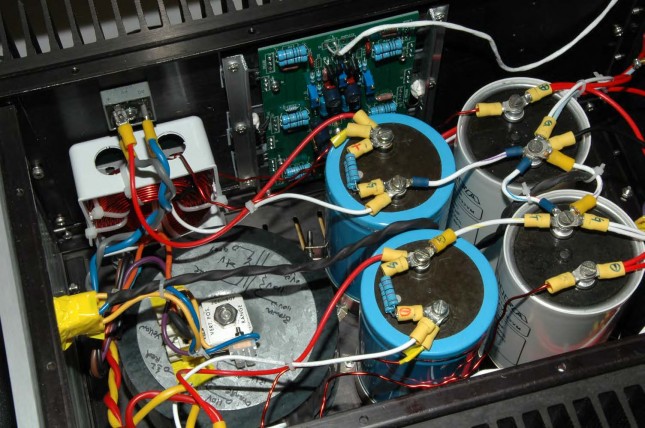
Related Images:
